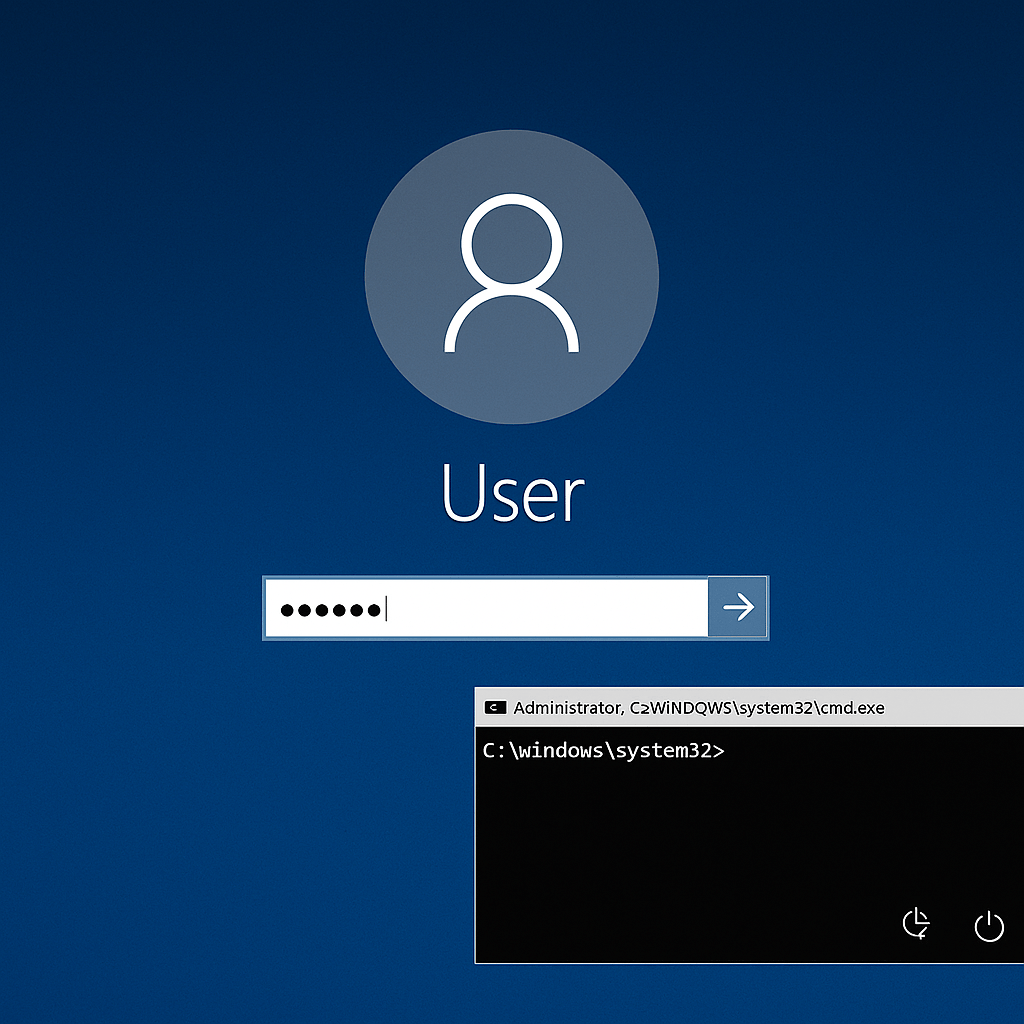The adoption of AI-powered coding platforms, such as OpenAI’s Codex, GitHub Copilot, Amazon CodeWhisperer, Google Gemini, Anthropic Claude, TabNine, Replit Ghostwriter, and Intellicode, promises transformative productivity gains. However, beneath the promise lies an intricate web of cybersecurity risks, intellectual property concerns, and vulnerabilities exploitable by sophisticated actors, including nation-states.
Comparing AI Coding Platforms
🚩 1. GitHub Copilot
- Backed by: Microsoft (in collaboration with OpenAI)
- Core Functionality: AI-assisted code generation, auto-completion, and real-time suggestions within IDEs.
- Positioning: Targets individual developers and enterprise teams for boosting coding productivity.
- Strengths: Deep integration with popular IDEs (e.g., VSCode), vast developer adoption, and familiarity.
- Corporate Buzzword: “Your AI pair programmer.”
🚩 2. Amazon CodeWhisperer
- Backed by: AWS (Amazon)
- Core Functionality: Code generation, vulnerability detection, real-time suggestions, focused on cloud-native development.
- Positioning: Optimized for AWS developers, emphasizing secure and efficient cloud-based application building.
- Strengths: Security-first approach, built-in security scanning, tailored for cloud and AWS service integrations.
- Corporate Buzzword: “AI coding companion for secure, scalable cloud development.”
🚩 3. Google Gemini
- Backed by: Google DeepMind
- Core Functionality: General-purpose large language model capable of software development tasks, including code generation, debugging, and optimization.
- Positioning: High-capability, enterprise-ready AI across diverse use cases beyond pure coding.
- Strengths: Extensive AI expertise, substantial computational infrastructure, deep integration potential with Google’s cloud ecosystem.
- Corporate Buzzword: “Next-gen AI assistant reshaping software development.”
🚩 4. Anthropic Claude
- Backed by: Anthropic (an AI safety-focused company)
- Core Functionality: Advanced natural language processing for code assistance, debugging, documentation, and software system explanations.
- Positioning: Focuses on safe, transparent, and ethical AI solutions, providing clarity and explainability in code recommendations.
- Strengths: Robust adherence to safety and transparency standards, ideal for compliance-heavy industries.
- Corporate Buzzword: “Responsible AI for transparent code and trustworthy outputs.”
🚩 5. TabNine
- Backed by: Independent; recently acquired by Codota.
- Core Functionality: AI-powered, deep-learning-based autocomplete solutions providing code suggestions and completions.
- Positioning: Agile and IDE-centric, oriented toward enhancing developer productivity in real-time.
- Strengths: Lightweight and IDE-focused, responsive and adaptable across programming languages.
- Corporate Buzzword: “AI-driven developer productivity engine.”
🚩 6. Replit Ghostwriter
- Backed by: Replit
- Core Functionality: Collaborative coding environment with integrated AI assistance, real-time coding collaboration, debugging, and deployment.
- Positioning: Appeals to educational sectors, beginner-friendly environments, and collaborative remote teams.
- Strengths: Integrated workflow (coding, testing, deployment) and collaborative coding features, ideal for distributed teams and educational use.
- Corporate Buzzword: “AI-enhanced collaboration and rapid iteration for every coder.”
🚩 7. Intellicode
- Backed by: Microsoft (Visual Studio team)
- Core Functionality: AI-driven contextual coding recommendations within Visual Studio and VS Code.
- Positioning: Highly contextual and personalized recommendations, focusing on development patterns specific to teams and projects.
- Strengths: Adaptive learning from existing codebases, tailored team-level insights.
- Corporate Buzzword: “Personalized AI for precise coding efficiency.”
8. OpenAI Codex
OpenAI Codex is a cutting-edge, cloud-based software engineering agent integrated into ChatGPT, designed to revolutionize the way developers interact with code. By leveraging the codex-1 model—a specialized version of OpenAI’s o3 reasoning model fine-tuned for programming tasks—Codex acts as an autonomous virtual coworker capable of handling a broad spectrum of software development activities.
Codex is engineered to perform multiple tasks in parallel within isolated cloud sandbox environments, each preloaded with your code repository. Its key functionalities include:
- Feature Development: Writing new code based on natural language prompts.
- Bug Fixing: Identifying and resolving issues within the codebase.
- Testing: Running tests to ensure code reliability.
- Codebase Q&A: Answering questions about the existing code structure and logic.
- Pull Request Proposals: Suggesting code changes for review, adhering to the project’s style and standards.
🥇 Competitive Differentiation:
Each player differentiates through strategic AI integration, developer experience enhancement, security integrations, or ecosystem synergy. The key is their ability to seamlessly embed into existing workflows, compliance with corporate standards, and scalability of their offerings.
💼 Strategic Recommendations for Organizations:
When selecting from these competitors:
- Consider your tech stack: AWS-heavy shops lean toward CodeWhisperer; Microsoft ecosystems find Copilot seamless; cloud-agnostic or security-critical users prefer Gemini, Claude, or Codex.
- Developer Experience: Evaluate IDE integrations, productivity gains, onboarding, and ease of use.
- Security and Compliance: Prioritize platforms explicitly addressing software security, like CodeWhisperer or Claude, in regulated industries.
- Innovation Agility: Codex, Claude, and Gemini represent broader strategic bets, preparing teams for advanced, evolving AI scenarios beyond simple code assistance.
Risk Landscape of AI Coding Platforms
🔒 1. GitHub Copilot (Microsoft/OpenAI)
Risks:
- Code Quality & Security Flaws: Copilot learns from vast public GitHub repositories, which can inadvertently propagate insecure or outdated code practices.
- Leakage of Proprietary Code: Usage may result in unintended disclosure of proprietary logic or intellectual property if training includes sensitive code snippets.
- Supply-Chain Poisoning: Potential for attackers to influence public training sets with maliciously crafted code.
Mitigation:
- Static Application Security Testing (SAST): Integrate static code analyzers into CI/CD pipelines to detect and mitigate introduced vulnerabilities.
- Policy Enforcement: Clearly defined usage guidelines and internal review protocols for AI-generated code.
- Internal Model Tuning: Opt for GitHub Copilot Enterprise or Azure-hosted versions, where model training can be controlled and audited.
Unmitigable:
- Intrinsic reliance on public training data makes absolute code security assurance impossible. Human oversight remains non-negotiable.
🔒 2. Amazon CodeWhisperer (AWS)
Risks:
- AWS Dependency Risks: Over-reliance could lead to vendor lock-in or tight coupling with AWS infrastructure.
- Potential Misconfiguration: AWS-specific code snippets might inadvertently cause cloud misconfigurations leading to security breaches.
Mitigation:
- Automated Infrastructure Audits: Regular use of AWS CloudFormation Guard, AWS Config, and third-party tools (e.g., CrowdStrike CSPM) to detect and correct misconfigurations.
- Security Policy Enforcement: IAM policies strictly scoped and reviewed for code-generated resources.
- Secure Coding Training: Continuous developer education on AWS best practices.
Unmitigable:
- Inherent risks related to AWS-centric recommendations, vendor lock-in remains an architectural trade-off.
🔒 3. Google Gemini (DeepMind)
Risks:
- Privacy Concerns: High-powered models might inadvertently expose sensitive data or internal logic during interactions.
- Bias in Recommendations: Potential reinforcement of systemic biases embedded in training data, leading to security blind spots.
Mitigation:
- Robust Data Handling Controls: Strict policies on data input, sanitization, and redaction prior to model interaction.
- Continuous Validation: Automated assessments and manual reviews of AI-generated code, especially security-sensitive modules.
- Fine-Tuned Deployments: Controlled Gemini model instances with specialized fine-tuning on curated datasets.
Unmitigable:
- DeepMind’s broad data training introduces exposure to unintended biases and behaviors, requiring constant vigilance.
🔒 4. Anthropic Claude
Risks:
- Transparency vs. Security Trade-Off: Focus on explainability might inadvertently disclose sensitive internal coding methodologies or architectures.
- Overly Simplified Recommendations: Potential for less technically nuanced security advice compared to other platforms.
Mitigation:
- Controlled Explanations: Policy-defined boundaries around sensitive modules and data when soliciting AI explanations.
- Layered Security Assessments: Incorporation of multi-layered security validation (SAST, DAST, penetration tests) in the development cycle.
Unmitigable:
- Complete openness can expose some strategic vulnerabilities or proprietary practices, inherently limiting certain security safeguards.
🔒 5. TabNine (Codota)
Risks:
- Limited Security Vetting: Code completions based on public models risk introducing vulnerabilities without thorough security validation.
- Data Leakage: Potential inadvertent transmission of sensitive code snippets back to the service.
Mitigation:
- On-Premise Hosting: Self-hosting TabNine instances with controlled and vetted datasets.
- IDE-Level Safeguards: Security plugins and automated code scanning integrated into developer IDEs to provide real-time vulnerability checking.
Unmitigable:
- Public data training always introduces a residual security uncertainty.
🔒 6. Replit Ghostwriter
Risks:
- Shared Collaborative Environment: Risk of internal code exposure or inadvertent sharing in collaborative environments.
- Misconfigurations During Deployment: Speed-oriented collaborative coding might sacrifice rigorous security checks.
Mitigation:
- Clear Security & Sharing Policies: Explicit controls on access and permission management within collaborative coding spaces.
- Pre-Deployment Security Gate: Automated security scans and controlled reviews before code deployment.
Unmitigable:
- Collaborative agility inherently risks bypassing traditional rigorous reviews, especially in rapid deployment scenarios.
🔒 7. Intellicode (Microsoft Visual Studio)
Risks:
- Overgeneralization Risks: Recommendations might oversimplify nuanced security requirements, potentially lowering security posture.
- Dependency Management Risks: AI might suggest legacy libraries or frameworks due to historical popularity.
Mitigation:
- Active Dependency Scanning: Integrate automated vulnerability checks (e.g., OWASP Dependency-Check, Snyk) into build processes.
- Continuous Model Feedback: Continuously retrain the model based on feedback from secure code guidelines.
Unmitigable:
- Historic code recommendation algorithms inherently carry forward outdated security practices, necessitating ongoing human intervention.
8. ChatGPT Codex (OpenAI)
⚠️ Security Risks:
- Data Privacy & Leakage:
- There’s a potential risk of sensitive or proprietary code being unintentionally shared with external systems during the use of Codex.
- Codex’s cloud-based nature implies reliance on OpenAI’s infrastructure, thus posing potential confidentiality issues.
- Code Quality & Vulnerabilities:
- Automatically generated code may unintentionally incorporate insecure or deprecated practices due to training on extensive public data sets.
- Codex-generated code may introduce subtle logic errors, vulnerabilities, or misconfigurations that bypass standard human scrutiny.
- Supply Chain Risk:
- Maliciously injected code in public repositories or training data can influence Codex recommendations, resulting in potential vulnerabilities or poisoned dependencies.
- Compliance & Regulatory Risks:
- The use of external AI infrastructure can inadvertently violate compliance requirements (GDPR, HIPAA, PCI-DSS), especially in regulated environments.
- Over-Reliance on AI:
- Developers may become complacent or overly reliant on generated code, leading to reduced manual oversight and increased security vulnerabilities.
📌 Universal Best Practices for Mitigation
Regardless of platform, maintain rigorous security standards:
- Human-in-the-Loop Validation: Mandatory human review, especially for security-critical code paths.
- Continuous Security Training: Developers must understand inherent risks associated with AI-generated code.
- Automation of Security Checks: Implement SAST/DAST tools, dependency vulnerability scanning, and infrastructure-as-code (IaC) validation.
- Data Governance: Ensure sensitive data never flows to externally hosted AI models; prefer local deployments or highly controlled SaaS environments.
- Policy Definition and Compliance: Clearly defined usage policies to mitigate data exposure and intellectual property risks.
🚨 Risks that Cannot be Fully Mitigated:
- Black Box Nature of AI Models: Models trained on vast, publicly sourced datasets inherently carry unknown or unseen vulnerabilities.
- Bias & Data Leakage Risks: Some bias or leakage risk will always persist due to the complexity and opacity of model training processes.
- Dependency on Vendor Stability & Policies: Vendors’ internal security, compliance, and privacy policies are out of direct organizational control.
📊 Bottom-Line Summary for Decision-Makers:
- GitHub Copilot and Google Gemini excel in broad functionality but come with notable data privacy concerns.
- Amazon CodeWhisperer is robust for AWS-heavy environments, with cloud dependency risks.
- Anthropic Claude prioritizes explainability but risks disclosing sensitive information.
- TabNine is fast and IDE-friendly but requires additional security oversight.
- Replit Ghostwriter offers collaboration but demands stricter code sharing policies.
- Intellicode provides tailored contextual recommendations but needs active oversight of dependencies.
How Nation-State Actors Could Poison Training Data:
1. Supply Chain Poisoning:
- Attack Vector: Threat actors infiltrate open-source code repositories (like GitHub, GitLab) or software package registries (e.g., npm, PyPI) with subtly malicious or vulnerable code.
- Impact: When AI platforms such as Codex train on this compromised code, they inadvertently incorporate vulnerabilities or logic flaws into their recommendations.
- Example Scenario: Nation-state hackers embed backdoors into commonly used open-source libraries, indirectly influencing Codex’s code generation to reproduce similar security vulnerabilities at scale.
2. Data Poisoning through “Seeding”:
- Attack Vector: Threat actors systematically contribute deceptive, insecure, or flawed code to publicly accessible platforms, deliberately structured to appear legitimate and popular (starred, forked, or frequently cloned).
- Impact: AI training models mistake poisoned samples as high-quality or “best practice” code, thereby reproducing and amplifying harmful coding patterns.
- Example Scenario: Actors create large volumes of subtly incorrect implementations of encryption algorithms (with exploitable flaws) and distribute them across open-source communities, intentionally misguiding AI training processes.
3. Manipulating Trending or Popular Code Examples:
- Attack Vector: Utilizing bot-driven amplification or coordinated efforts, threat actors artificially increase the visibility, popularity, or perceived reliability of compromised code examples.
- Impact: AI systems prioritize popular content during training, integrating insecure or exploitable coding styles widely into AI-generated outputs.
- Example Scenario: Bots operated by nation-states amplify the popularity of certain compromised GitHub repositories, misleading Codex to interpret them as authoritative.
4. Embedding Vulnerabilities in Educational Resources:
- Attack Vector: Publishing tutorials, blog posts, Stack Overflow answers, and instructional materials containing subtle, hard-to-detect flaws or malicious code snippets.
- Impact: AI models that scrape educational platforms incorporate these subtly malicious or insecure coding patterns into training datasets.
- Example Scenario: Sophisticated nation-state hackers release seemingly authoritative programming guides containing intentional vulnerabilities in authentication or data validation practices.
5. Misleading Documentation (Semantic Poisoning):
- Attack Vector: Nation-state actors subtly alter or publish fake versions of widely used software documentation or APIs online.
- Impact: AI training processes interpret these official-looking but maliciously modified documents as genuine, causing widespread misuse or insecure API implementations.
- Example Scenario: An attacker modifies online documentation for a widely-used cloud service to promote insecure API calls or vulnerable resource access configurations.
6. Indirect Infrastructure Attacks:
- Attack Vector: Nation-states may compromise servers or infrastructure that host training data or datasets, altering the integrity of training data.
- Impact: AI models trained on compromised infrastructure unknowingly ingest corrupted data, embedding vulnerabilities or hidden backdoors within generated recommendations.
- Example Scenario: Attackers infiltrate cloud storage hosting widely-used datasets, injecting subtle vulnerabilities into popular machine-learning benchmarking or training data repositories.
⚠️ Other Associated Risks Introduced by Nation-States:
- Model Poisoning (Adversarial Machine Learning):
Deliberate crafting of input data or training examples to manipulate model outputs. This can be as subtle as altering numerical values slightly to degrade accuracy or introduce systematic biases. - Bias Injection:
Nation-state actors deliberately introduce systemic biases, skewing models to provide misleading recommendations that can subtly weaken the cybersecurity posture of organizations over time. - Disinformation & Influence Operations:
AI systems consuming large amounts of public data might also ingest subtle disinformation campaigns. This can distort decision-making processes or degrade trust in AI recommendations.
Security and Privacy of Proprietary Code on AI Platforms
Your proprietary code is only as secure as the platform and infrastructure you’re using. When considering ChatGPT Codex or similar AI-powered coding platforms, here’s the brutal, straightforward truth about your risks and considerations, especially if you’re aiming for patent protection later on.
📌 Key Risks to Proprietary Code
1. Intellectual Property Leakage:
- Any code snippet or logic shared with external AI services like ChatGPT Codex potentially exposes your proprietary information outside your control.
- Although providers like OpenAI emphasize strict data controls, the fundamental fact remains: you’re handing sensitive material to third-party infrastructure.
2. Patentability and Disclosure Risk:
- Using third-party AI tools to write novel, patentable inventions introduces a risk of inadvertent disclosure. If the platform retains or trains future models on submitted code, your invention’s novelty or secrecy might be compromised.
- Patenting requires demonstrating originality and non-public exposure. If your AI interactions result in even indirect public disclosure, you may weaken or even lose patent rights.
3. Data Residency and Compliance:
- Regulatory frameworks (GDPR, HIPAA, PCI-DSS, ISO 27001) can be compromised if data or proprietary code moves beyond organizational boundaries. Compliance audits may become problematic.
4. Vendor Trust and Control:
- Ultimate security is never entirely within your control. You rely heavily on the vendor’s internal security posture, which can change, potentially leaving your sensitive IP vulnerable to leaks or breaches.
🔐 How “Safe” is ChatGPT Codex for Proprietary Applications and Patents?
- OpenAI states clearly: by default, your interactions are not used to train or improve the model. However, this policy might evolve over time. Policies can change; terms of service should be continuously verified.
- Enterprise versions of ChatGPT or private deployments may offer stronger contractual assurances and more robust data handling, but they still involve a degree of inherent risk.
- Without direct control over infrastructure, there is always an underlying vulnerability to leaks, breaches, or accidental exposure.
🛡️ Practical Mitigation for Protecting Proprietary Code:
If you’re planning to patent or maintain strict IP control, here’s your no-nonsense mitigation playbook:
- Opt for Private or Dedicated Enterprise Instances:
Seek contracts explicitly forbidding reuse of your submitted code or model training on it. - Clear and Strong Legal Agreements:
Insist on well-defined contracts ensuring your code is confidential and will never be used in future model training or exposed externally. - Limited and Sanitized Interaction:
Provide the AI with generic or sanitized pseudo-code to minimize risk of exposure. Never share sensitive algorithms or key differentiators without rigorous sanitization. - On-Premise or Locally Hosted AI Models:
Self-host or deploy models within your own environment, ensuring your data never leaves your control. For sensitive, patentable inventions, this is often the safest route. - Robust Audit Trails:
Log and monitor every interaction with AI coding platforms. Document your internal IP chain of custody thoroughly.
⚠️ What Can’t Be Fully Mitigated?
- Inherent Third-Party Dependency:
Complete certainty about security/privacy is impossible when you rely on external vendors, despite assurances. - Data Leakage from Breaches:
Even reputable companies can suffer breaches. No vendor assurance is 100% foolproof. - Future Policy Changes:
Vendors might alter policies, potentially compromising previously protected intellectual property. Constant vigilance and contractual safeguards are necessary.
📝 Realistic Recommendations for Patent-Related Applications:
- If the invention is highly novel and strategic:
Avoid third-party AI coding platforms entirely for core inventive steps or sensitive logic. Leverage internal resources instead. - If using Codex for peripheral or non-critical parts:
Exercise careful segmentation of what you share. Ensure critical IP never leaves your control. - Clearly document all interactions:
Maintain detailed internal logs, timestamps, and documentation to defend your invention’s patentability if questions of originality arise.
🚦 Final Verdict (“Tell it like it is”):
Bottom line—using ChatGPT Codex or any external AI platform for patent-sensitive code carries inherent risk. While OpenAI offers assurances, nothing is risk-free in cybersecurity.
If you require absolute control and protection of proprietary or patentable innovations:
- Keep core IP and innovative logic strictly internal.
- Use external AI for support tasks, generic components, or boilerplate—but never critical intellectual property.

Information security specialist, currently working as risk infrastructure specialist & investigator.
15 years of experience in risk and control process, security audit support, business continuity design and support, workgroup management and information security standards.











